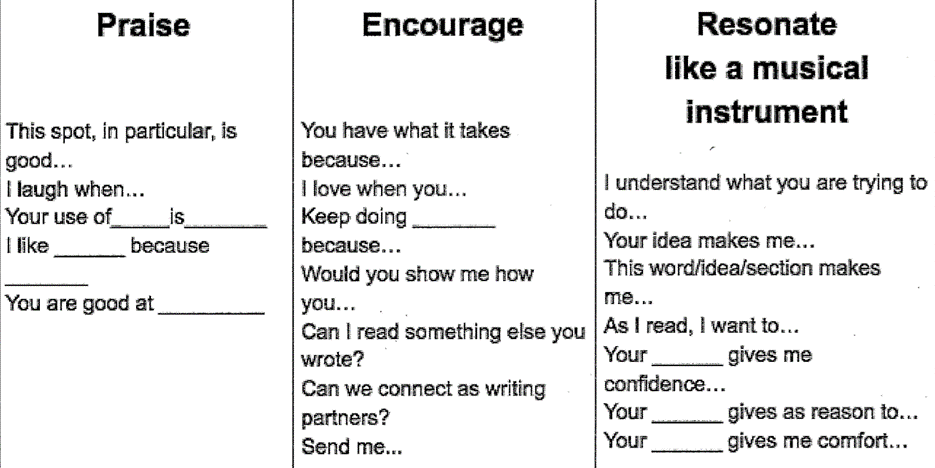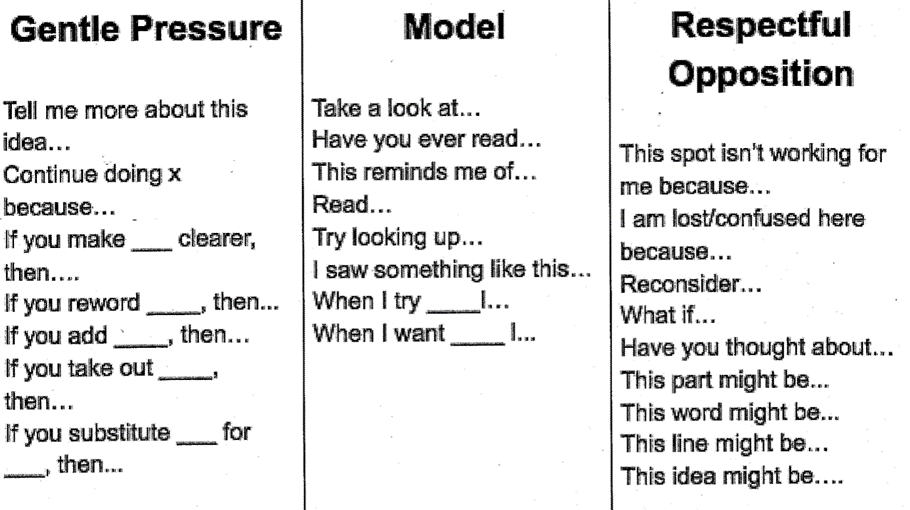Inviting Students to Participate in Effective Feedback
Feedback. The daunting and mystical term prompting students to fill their peer’s pages with “good job” and “nice work.” As teachers, we want more—so we change the word to effective feedback. The result of which garners students to share “really good job!” and “I love it!” This is when teacher frustration ensues, as we pull our hair and turn red trying to explain what effective feedback actually is.
My first time hearing about the idea of effective feedback was during a PAWLP summer institute course. Our guest speaker, Brian Kelley, discussed the idea of teaching students what effective feedback is and how to use it—a simple concept that changed everything for me. In the past, I had some sort of mini-lesson that included what feedback is, with a few brief sentence starters to generate conversation among students. This was fine, but not great.

This month, the students and I will spend a day discussing and practicing effective feedback. My plan for the day begins with a writing prompt. I will show “Paul Delvaux: The Village of the Mermaids” by Lisel Mueller— since it is the beginning of the year and the climate of the room is still forming, it is important to create a prompt that students will readily share with a peer they may not hold a relationship with.
Once students complete their writing, instruction on effective feedback begins. This includes providing a definition of effective feedback and showing examples of comments/feedback from social media posts. Sharing these examples not only attracts student attention, but also provides a platform to discuss what works and does not work in the comments/feedback.

Next, it is time to review the six terms in sharing effective feedback—praise, encourage, resonate, gentle pressure, model, and respectful opposition—along with their sentence starters. This is when the English nerd comes out of me, which happens quite regularly, where the students and I engage in a lively discussion of, “which term is your favorite?” or “how would you use this with partner?” Working with seventh graders, this always turns silly, mimicking a “would you rather…” style conversation.
Finally, we practice. I use a website (http://flippity.net/) to break students up into groups—this site is worth trying in your opening months of school to randomize students into group sizes of your choice as well as generate conversation among those who do not normally engage with one another. In these groups, students will exchange their opening writing passages and begin providing each other with effective feedback. Tip: keep the terms and their meaning projected on the board as well as provide students with an effective feedback handout to complete.
This is the first of many moments in my classroom practicing this skill. Not only will students learn to review each other’s work, but they also learn to accept the feedback and revise. Revision is another lesson for another day.






I have never thought to use sentence stems for prompting more effective feedback. Genious! I’m excited to try this out this year.
LikeLike